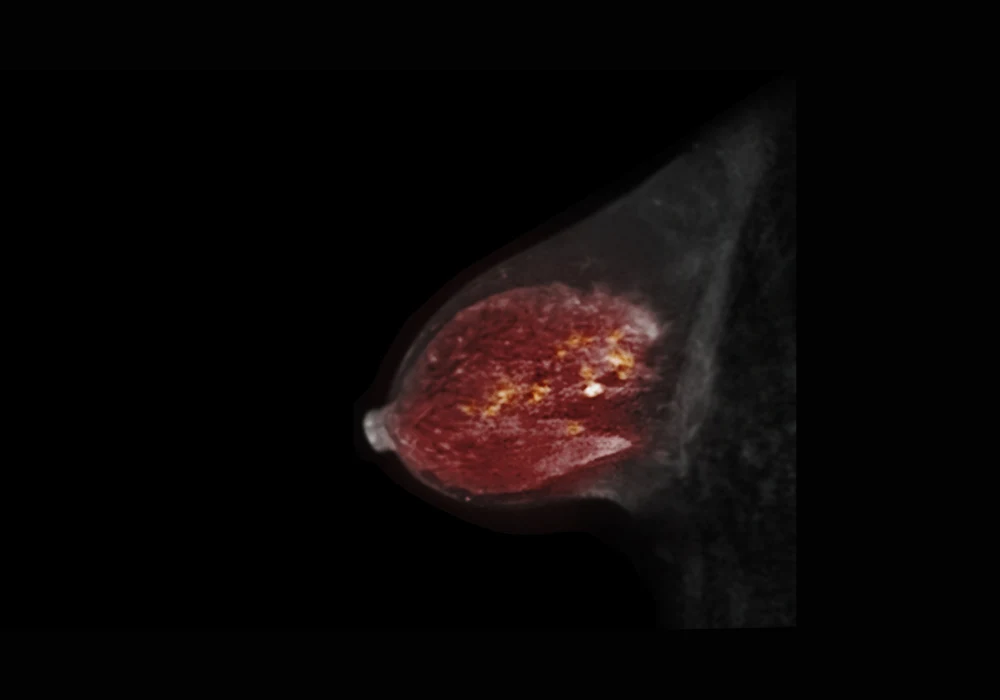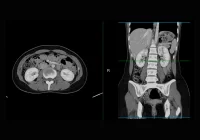Magnetic resonance imaging (MRI) plays a vital role in breast cancer screening by providing highly detailed anatomical and physiological images without exposing patients to ionising radiation. Despite its clinical value, breast MRI is underused in screening due to long scan times, high costs and reduced patient throughput. Traditional MRI protocols are lengthy, often including multiple imaging sequences that add complexity without necessarily improving diagnostic outcomes. Abbreviated breast MRI (AB-MRI), which excludes non-essential sequences, has been proposed as a faster alternative, but its adoption has been slow. A new approach using artificial intelligence offers a solution by allowing real-time decisions on whether to complete the full MRI protocol or conclude early with AB-MRI, potentially transforming the way breast MRI is performed.
Real-Time AI Triage for MRI Protocols
In standard clinical practice, radiologists decide on the MRI protocol in advance. This means all patients undergo a fixed series of imaging sequences, regardless of their individual risk profile or the imaging findings that emerge during the scan. The AI-directed scanning model offers a more adaptive alternative. This method uses an AI triage tool to analyse dynamic contrast-enhanced (DCE) images early in the scan, generating a suspicion score. Based on this score, the system decides in real time whether to proceed with the full set of sequences or stop the scan at the abbreviated protocol stage.
This approach was tested in a retrospective reader study using data from 1,423 screening breast MRI examinations in 863 women across three regional cancer sites. The AI tool had been previously trained and validated separately, ensuring independence from the study dataset. Scans were categorised by suspicion score, and those below a defined threshold were assigned to AB-MRI. The remainder followed the full MRI protocol. Radiologists reviewed the scans and assigned Breast Imaging Reporting and Data System (BI-RADS) scores based on either the abbreviated or full set of images. The study simulated triage thresholds ranging from 0% to 50% to assess the diagnostic performance of the AI-directed scanning compared with conventional full-protocol imaging.
Diagnostic Results and Safety of AI Triage
The key finding of the study was that AI-directed triage maintained diagnostic performance while allowing up to half of all examinations to be shortened. At the 50% triage threshold, sensitivity was 88.2%, slightly higher than the 86.3% observed with conventional scanning. Specificity was reduced marginally, from 81.4% to 80.8%, and the cancer detection rate remained similar: 31.6 versus 30.9 cancers per 1,000 examinations. These results demonstrate that AI triage does not increase the risk of missed cancers and may even improve efficiency.
Must Read: Image Normalisation in Breast MRI Radiomics
Importantly, no cancers detected with the full protocol were missed when scans were triaged to AB-MRI. In some cases, radiologists identified suspicious findings using only the abbreviated set of images, even when the full protocol did not lead to a cancer diagnosis. The only missed cancers were those that were undetected by both AB-MRI and the full MRI, indicating that triage decisions did not lead to worse outcomes. In non-cancer examinations, the AI-directed approach resulted in a modest increase in false-positive assessments, with a rise in unnecessary biopsy rates from 4.2% to 6.0% at the 50% triage level.
These findings suggest that AI triage safely identifies which patients require full imaging and which do not, reducing unnecessary scanning without compromising patient care. The approach is especially effective because cancers are typically identified on DCE images, while the additional sequences in full MRI are mainly used for further characterisation. By using DCE images as the basis for triage, AI enables focused imaging that preserves diagnostic integrity.
Implications for Workflow and Patient Experience
The potential impact of AI-directed MRI is significant. If half of all patients can complete screening with a scan lasting less than five minutes, overall scanning time can be reduced by at least one third. This translates into shorter waiting times, greater scanner availability and lower operational costs. It may also make breast MRI more accessible, especially for high-risk populations who benefit most from early detection. Shorter scans can also improve patient comfort, reduce movement artefacts and enhance image quality.
Beyond time and cost savings, the AI-directed approach introduces a dynamic element to MRI scanning, where decisions are made on the basis of real-time data rather than fixed protocols. This flexibility opens the door to further personalisation, such as adjusting sequence parameters or scan resolution during the examination. It also creates opportunities for better integration of imaging with clinical decision-making, as real-time AI outputs could support radiologists in interpreting results more accurately and efficiently.
While the study was limited to a simulation and did not include real-time AI implementation, it provides strong evidence for the feasibility and safety of adaptive scanning. Ongoing development aims to integrate AI tools directly into MRI systems, allowing real-time triage decisions and potentially improving workflows further. This may also enable the technology to act as a safety net in existing AB-MRI programmes, identifying cases that require additional imaging before the patient leaves the scanner.
AI-directed breast MRI represents a major step forward in making cancer screening faster, more efficient and patient-centred. By triaging scans based on early image analysis, AI allows radiologists to focus resources where they are most needed while maintaining high diagnostic accuracy. The results of the study suggest that adaptive scanning could reduce the average scan time by one third, with only minor trade-offs in specificity and no increase in missed cancers. Integrating AI in this way could redefine the standard of care, transforming a traditionally rigid imaging process into a responsive, data-driven tool tailored to each patient.
Source: Radiology
Image Credit: iStock










